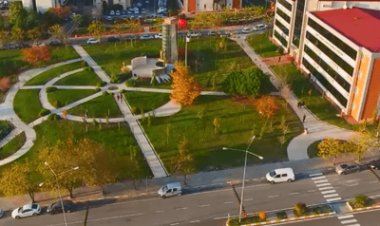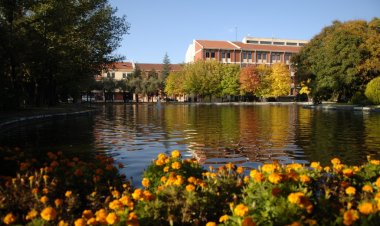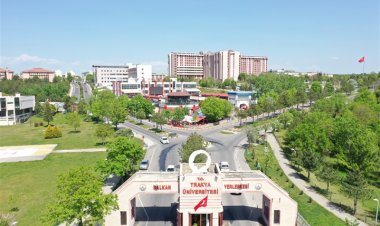Disruption of Biofilm Formation and Quorum Sensing in Pathogenic Bacteria by Compounds from Zanthoxylum Gilletti (De Wild) PG Waterman
Disruption of Biofilm Formation and Quorum Sensing in Pathogenic Bacteria by Compounds from Zanthoxylum Gilletti (De Wild) PG Waterman kome, Hermia Nalova; Tamfu, Alfred Ngenge; Abdou, Jean Pierre; Fouotsa, Hugues; Nangmo, Pamela Kemda; Özgür, Ceylan Microbial resistance is facilitated by biofilm formation and quorum-sensing mediated processes. In this work, the stem bark (ZM) and fruit extracts (ZMFT) of Zanthoxylum gilletii were subjected to column chromatography and afforded lupeol (1), 2,3-epoxy-6,7-methylenedioxyconiferyl alcohol (3), nitidine chloride (4), nitidine (7), sucrose (6) and sitosterol-beta-D-glucopyranoside (2). The compounds were characterized using MS and NMR spectral data. The samples were evaluated for antimicrobial, antibiofilm and anti-quorum sensing activities. Highest antimicrobial activity was exhibited by compounds 3, 4 and 7 against Staphylococcus aureus (MIC 200 mu g/mL), compounds 3 and 4 against Escherichia coli (MIC = 100 mu g/mL) and compounds 4 and 7 against Candida albicans (MIC = 50 mu g/mL). At MIC and sub-MIC concentrations, all samples inhibited biofilm formation by pathogens and violacein production in C. violaceum CV12472 except compound 6. Good disruption of QS-sensing in C. violaceum revealed by inhibition zone diameters were exhibited by compounds 3 (11.5 +/- 0.5 mm), 4 (12.5 +/- 1.5 mm), 5 (15.0 +/- 0.8 mm), 7 (12.0 +/- 1.5 mm) as well as the crude extracts from stem barks (16.5 +/- 1.2 mm) and seeds (13.0 +/- 1.4 mm). The profound inhibition of quorum sensing mediated processes in test pathogens by compounds 3, 4, 5 and 7 suggests the methylenedioxy- group that these compounds possess as the possible pharmacophore.

Disruption of Biofilm Formation and Quorum Sensing in Pathogenic Bacteria by Compounds from Zanthoxylum Gilletti (De Wild) PG Waterman kome, Hermia Nalova; Tamfu, Alfred Ngenge; Abdou, Jean Pierre; Fouotsa, Hugues; Nangmo, Pamela Kemda; Özgür, Ceylan Microbial resistance is facilitated by biofilm formation and quorum-sensing mediated processes. In this work, the stem bark (ZM) and fruit extracts (ZMFT) of Zanthoxylum gilletii were subjected to column chromatography and afforded lupeol (1), 2,3-epoxy-6,7-methylenedioxyconiferyl alcohol (3), nitidine chloride (4), nitidine (7), sucrose (6) and sitosterol-beta-D-glucopyranoside (2). The compounds were characterized using MS and NMR spectral data. The samples were evaluated for antimicrobial, antibiofilm and anti-quorum sensing activities. Highest antimicrobial activity was exhibited by compounds 3, 4 and 7 against Staphylococcus aureus (MIC 200 mu g/mL), compounds 3 and 4 against Escherichia coli (MIC = 100 mu g/mL) and compounds 4 and 7 against Candida albicans (MIC = 50 mu g/mL). At MIC and sub-MIC concentrations, all samples inhibited biofilm formation by pathogens and violacein production in C. violaceum CV12472 except compound 6. Good disruption of QS-sensing in C. violaceum revealed by inhibition zone diameters were exhibited by compounds 3 (11.5 +/- 0.5 mm), 4 (12.5 +/- 1.5 mm), 5 (15.0 +/- 0.8 mm), 7 (12.0 +/- 1.5 mm) as well as the crude extracts from stem barks (16.5 +/- 1.2 mm) and seeds (13.0 +/- 1.4 mm). The profound inhibition of quorum sensing mediated processes in test pathogens by compounds 3, 4, 5 and 7 suggests the methylenedioxy- group that these compounds possess as the possible pharmacophore.

 Bilgi
Bilgi 














